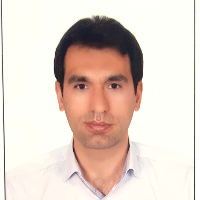Determining changes in carbon sequestration and some soil properties in the elevation gradient of rangelands in the north of Sablan, Iran
Rangeland ecosystems cover more than half of the earth's land surface, these ecosystems have high carbon sequestration and cause the formation of about 10% of the total biomass carbon reserves and 30% of soil carbon. Carbon sequestration potential differs according to plant species, habitats, and management methods. Each ecosystem has a certain potential which is determined by utilizing of natural vegetation, climatic conditions, and physical and chemical properties of the soil. Moreover, the amount of carbon in the soil and plants depends on the characteristics of topography, and any change in the elevation and slope of the habitat will affect the amount of organic carbon in the soil and plant cover and carbon sequestration. Therefore, it is important to determine the effects of elevation and slope characteristics, type of vegetation and canopy cover, and soil characteristics on the amount and changes of carbon sequestration. In this study, the carbon sequestration capacity and its relationship with some physical and chemical characteristics of soil, topography, and rangeland habitat have been investigated.
Sampling was conducted in six sites in elevation gradient (from 1400 to 3600 m above sea level; rainfall from 350 to 700 mm; the mean temperature varies from -0.24 to 10.1 °C) in the north of Sablan Mountain, Meshginshahr County, Iran, including three sites with the dominant physiognomy of grass-shrublands and three sites with grassland in three elevation levels of less than 2000, 2000-2500 and more than 2500 m above sea level. In each site, soil sampling was conducted at two depths of 0-15 and 15-30 cm. The random-systematic method was used to study vegetation variables. In this way, 10 plots of one m2 (based on the distribution pattern of plants) were established in each of the three transects with a length of 100 m along each transect. After determining the normality of the data and the homogeneity of the variance of the data, two-way analysis of variance general linear model (GLM) was used for the overall comparison.
The results showed that with the increase in elevation in the two investigated habitats (grassland and grass-shrubland), the carbon sequestration in the soil increased. Moreover, the results indicate that the depth of the soil has a significant effect on the carbon sequestration capacity. Thus the highest amount of soil carbon deposition is in the soil depth of 0-15 cm in the grassland habitat with an elevation of more than 2500 m (70.53 gr cm-2), then the depth of 0-15 cm in the grass-shrub habitat. At an elevation of more than 2500 m (63.98) and a soil depth of 30-15 cm, the grassland habitat is at an elevation of 2000-2500 m (62.73), and its lowest amount belongs to a soil depth of 30-15 cm. The grass-shrub habitat is at an elevation of less than 2000 m. The results of the correlation analysis of carbon sequestration in habitats and different elevation classes indicate a negative relationship with the percentage of sand, acidity, and electrical conductivity of the soil, and a positive correlation with the percentage of clay and silt, the percentage of organic carbon and organic matter, the percentage of carbon, particulate organic matter, soil nitrogen, and total vegetation cover has shown.
The distribution of carbon stocks between biomass and soil varies among ecosystems and is influenced by elevation, so that the carbon sequestration potential is more significant in high elevation classes than in lower classes. Based on the estimated carbon values in the studied habitats, it can be concluded that the higher percentage of canopy cover and density preserves more moisture and prevents evaporation, which in turn can affect the amount of cover and density. Therefore, the effect of vegetation in different elevation classes on the amount of changes in soil carbon deposition is confirmed based on the results obtained in this research. Overall, the carbon sequestration potential is different according to habitat and elevation classes; therefore, by better understanding these factors and investigating the management factors that affect the sequestration process, we can take steps towards strengthening carbon sequestration and sustainable management of rangelands.
- حق عضویت دریافتی صرف حمایت از نشریات عضو و نگهداری، تکمیل و توسعه مگیران میشود.
- پرداخت حق اشتراک و دانلود مقالات اجازه بازنشر آن در سایر رسانههای چاپی و دیجیتال را به کاربر نمیدهد.




